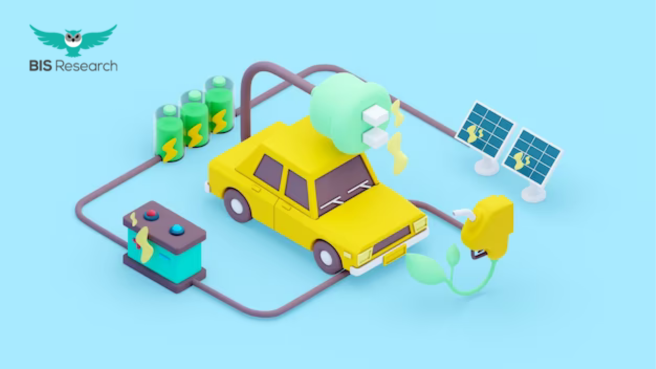In the dynamic landscape of the automotive industry, the Electric Vehicle (EV) sector has become a focal point, driven by a global shift toward sustainability. As the adoption of electric vehicles accelerates, the significance of their components, including insulation, cannot be overstated. This brief analysis provides insights into the global Electric Vehicle Insulation market, drawing on the expertise of top research companies to understand current trends, challenges, and future prospects.
The global is projected to reach $30.90 billion by 2032 from $2.96 billion in 2022, growing at a CAGR of 27.83% during the forecast period 2023-2032.
The Electric Vehicle Insulation market is experiencing robust growth, propelled by the surge in electric vehicle adoption worldwide. Leading research companies project a compound annual growth rate (CAGR) that reflects the industry’s upward trajectory. Factors such as government incentives, environmental regulations, and advancements in insulation technologies are contributing to the market’s expansion.
Electric Vehicle Insulation: A Critical Component
Insulation in electric vehicles is not merely about keeping passengers comfortable. It plays a crucial role in optimizing the performance of electric drivetrains, ensuring safety, and extending the lifespan of key components. Let’s explore the key functions of insulation in electric vehicles:
Temperature Control:
Electric vehicles generate heat during operation, particularly in components like batteries and electric motors. Effective insulation is essential to regulate temperatures and prevent overheating, which can compromise the efficiency and safety of the vehicle.
Safety Enhancement:
- Insulation acts as a barrier, protecting occupants from potential electrical hazards. It prevents electrical components from coming into direct contact with passengers and ensures that the vehicle meets stringent safety standards.
Battery Performance:
- Batteries are the heart of electric vehicles. Proper insulation is critical for maintaining the optimal temperature range for battery performance, ensuring efficient charging and discharging cycles and prolonging the battery’s life.
Reducing Noise, Vibration, and Harshness (NVH):
- Insulation materials contribute to a quieter and smoother driving experience by minimizing noise, vibration, and harshness. This is especially important in electric vehicles, which are known for their quiet operation.
Market Trends and Innovations:
Advanced Insulation Materials:
- The market is witnessing a surge in the development and adoption of advanced insulation materials such as aerogels and high-performance foams. These materials offer superior thermal resistance and are lightweight, contributing to the overall efficiency of electric vehicles.
Integration of Smart Insulation Systems:
- Smart insulation systems equipped with sensors and adaptive features are gaining traction. These systems can dynamically adjust insulation properties based on real-time conditions, further enhancing energy efficiency.
Focus on Lightweighting:
- Electric vehicle manufacturers are increasingly emphasizing lightweighting to enhance overall energy efficiency and range. Insulation materials that are both lightweight and effective in thermal management are in high demand.
Research Insights:
Top research companies are actively contributing to the understanding of market dynamics and trends. Their insights highlight several key aspects:
Material Innovations:
In-depth research is uncovering new and advanced insulation materials. Aerogels, high-performance foams, and other lightweight yet efficient materials are gaining prominence for their thermal resistance and overall effectiveness.
Smart Insulation Systems:
Research indicates a shift toward smart insulation systems equipped with sensors and adaptive features. These systems have the potential to dynamically adjust insulation properties based on real-time conditions, contributing to enhanced energy efficiency.
Market Challenges:
Research companies acknowledge challenges such as cost concerns, the need for standardized testing procedures, and the constant demand for improved performance. Addressing these challenges is crucial for sustained market growth.
Future Outlook:
The future of the Electric Vehicle Insulation market appears promising. Research indicates a continued focus on material advancements, smart technologies, and solutions that address challenges. As electric vehicles become mainstream, research companies anticipate sustained demand for efficient and reliable insulation solutions, creating opportunities for innovation and market expansion.
As the world transitions towards a sustainable and eco-friendly future, electric vehicles (EVs) have emerged as a key player in reducing carbon emissions and dependence on fossil fuels. Behind the sleek designs and cutting-edge technology of electric vehicles lies a crucial component – insulation. Electric vehicle insulation plays a pivotal role in enhancing the performance, safety, and efficiency of these green machines. In this blog post, we delve into the Electric Vehicle Insulation Market, exploring its current trends, challenges, and the role it plays in shaping the future of transportation.
Conclusion:
In the journey towards a sustainable and greener future, electric vehicles are leading the way. The electric vehicle insulation market plays a crucial role in ensuring the optimal performance, safety, and efficiency of these eco-friendly vehicles. With advancements in materials and technology, the market is poised for substantial growth, contributing to the ongoing evolution of the automotive industry and the broader transition towards a cleaner and more sustainable transportation landscape.
Author bio:
Hello, I am a professional SEO Expert & the brand xperts of the blog, and website on different platforms- we provide a good opportunity for content writers to submit guest posts on our website. We frequently highlight and tend to showcase guests.









